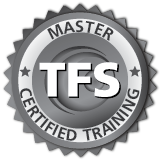Objectives
After successfully completing this course, you should be able to:
- Describe the various OSPF link-state advertisement (LSA) types.
- Explain the flooding of LSAs in an OSPF network.
- Describe the shortest-path-first (SPF) algorithm.
- List key differences between OSPFv2 and OSPFv3.
- Describe OSPF area types and operations.
- Configure various OSPF area types.
- Summarize and restrict routes.
- Identify some scenarios in a service provider network that can be solved using routing policy or specific configuration options.
- Use routing policy and specific configuration options to implement solutions for various scenarios.
- Describe how to troubleshoot OSPF.
- Explain the concepts and operation of IS-IS.
- Describe various IS-IS link-state protocol data unit (LSP) types.
- List IS-IS adjacency rules and troubleshoot common adjacency issues.
- Configure and monitor IS-IS.
- Display and interpret the link-state database (LSDB).
- Perform advanced IS-IS configuration options.
- Implement IS-IS routing policy.
- Explain the default operation in multiarea IS-IS.
- Describe IS-IS address summarization methods.
- Configure and monitor a multiarea IS-IS network.
- Describe how to troubleshoot IS-IS.
- Describe basic BGP operation.
- List common BGP attributes.
- Explain the route selection process for BGP.
- Describe how to alter the route selection process.
- Configure some advanced options for BGP peers.
- Describe various BGP attributes in detail and explain the operation of those attributes.
- Manipulate BGP attributes using routing policy.
- Explain the causes for route instability.
- Describe the effect of damping on BGP routing.
- Explain the default behavior of damping on links.
- Control damping using routing policy.
- View damped routes using command-line interface (CLI) commands.
- Describe the operation of BGP route reflection.
- Configure a route reflector.
- Describe the operation of a BGP confederation.
- Configure confederations.
- Describe peering relationships in a confederation.
- Describe how to troubleshoot BGP.
- Describe how to troubleshoot routing policy.
Lectures
Day 1
Chapter 1: Course Introduction
Chapter 2: OSPF
- OSPFv2 Review
- Link-State Advertisements
- Protocol Operations
- OSPF Authentication
- Lab: OSPF Multi-Area Networks
Chapter 3: OSPF Areas
- Review of OSPF Areas
- Stub Area Operation
- Stub Area Configuration
- NSSA Operation
- NSSA Configuration
- Route Summarization
- Lab: OSPF Route Summarization
Chapter 4: OSPF Case Studies and Solutions
- Virtual Links
- OSPF Multiarea Adjacencies
- External Reachability
- Lab: Advanced OSPF Options and Routing Policy
Day 2
Chapter 5: Troubleshooting OSPF
- Troubleshooting OSPF
- Lab: OSPF Troubleshooting
Chapter 6: IS-IS
- Overview of IS-IS
- IS-IS PDUs
- Neighbors and Adjacencies
- Configuring and Monitoring IS-IS
- Lab: IS-IS Configuration and Monitoring
Chapter 7: Advanced IS-IS Operations and Configuration Options
- IS-IS Operations
- IS-IS Configuration Options
- IS-IS Routing Policy
- Lab: Advanced IS-IS Configuration Options and Routing Policy
Day 3
Chapter 8: Multilevel IS-IS Networks
- Level 1 and Level 2 Operations
- Multilevel Configuration
- Lab: Configuring a Multilevel IS-IS Network
Chapter 9: Troubleshooting IS-IS
- Troubleshooting IS-IS
- Lab: IS-IS Troubleshooting
Chapter 10: BGP
- Review of BGP
- BGP Operations
- BGP Path Selection Options
- Configuration Options
- Lab: BGP and BGP Attributes
Day 4
Chapter 11: BGP Attributes and Policy—Part 1
- BGP Policy
- Next Hop
- Origin and MED
- AS Path
- Lab: BGP Attributes – Next Hop, Origin, MED, and AS Path
Chapter 12: BGP Attributes and Policy—Part 2
- Local Preference
- Communities
- Lab: BGP Attributes – Local Preference and Communities
Chapter 13: Route Reflection and Confederations
- Route Reflection Operation
- Configuration and Routing Knowledge
- BGP Confederations
- Lab: Scaling BGP
Day 5
Chapter 14: BGP Route Damping
- Route Flap and Damping Overview
- Route Damping Parameters
- Configuring and Monitoring Route Damping
- Lab: BGP Route Damping
Chapter 15: Troubleshooting BGP
- Troubleshooting BGP
- Lab: BGP Troubleshooting
Chapter 16: Troubleshooting Policy
- Troubleshooting Policy
- Lab: Policy Troubleshooting
Labs
No lab information available.
Prerequisites: None
Students should have intermediate-level networking knowledge and an understanding of the Open Systems Interconnection (OSI) model and the TCP/IP protocol suite. Students should also attend the Introduction to the Junos Operating System (IJOS) and Junos Intermediate Routing (JIR) courses prior to attending this class.
Target Audience
This course benefits individuals responsible for implementing, monitoring, and troubleshooting Layer 3 components of a service provider’s network.


